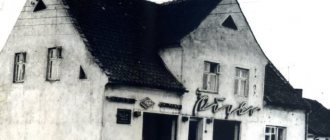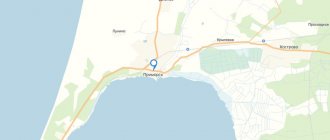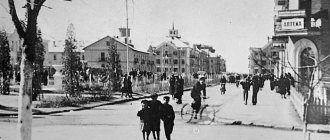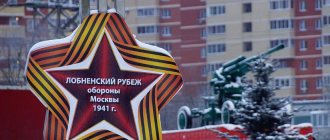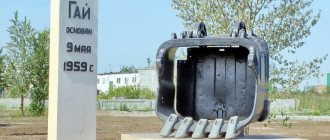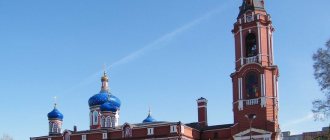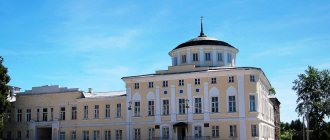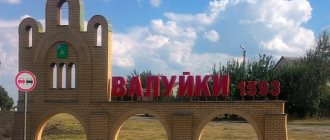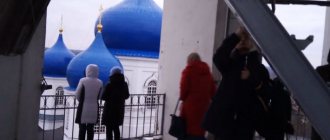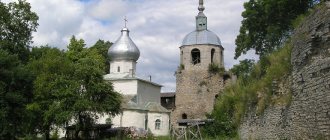About the history of the city
Along the Neman River in hoary antiquity lived tribes of the Skalvs, a Baltic nation that eventually dissolved into the Lithuanian nation. Their fortified capital was located on the site of the current city.
Opposite the Neman, on the other side of the river, there is Mount Rambinas - sacred to the Skalvi and some neighboring tribes. Ancient rituals have long been performed at its peak. Neo-pagans gather on Mount Rambynas even in our era.
Such a significant place attracted special attention from the crusaders advancing from the west. In 1277, they sailed on a small flotilla under the command of Dietrich von Liedelau, and the army of their vassals came from the upper reaches of the Neman, and after a bloody battle captured the pagan capital.
In its place, construction of the order's castle immediately began. This wooden fortress, built on the site of the Skalvi castle - a stronghold of militant Catholicism - was destroyed for several centuries by regular attacks by the Lithuanians. Until a powerful stone castle was erected in 1409, which survived and has survived to this day.
Ragnit Castle and the city of the same name became an important military center of East Prussia. In different historical eras, the Prussian king of Prussia, Friedrich Wilhelm I, and Swedish and Russian troops, and the hordes of Napoleon managed to visit it. The castle survived all the wars and, almost intact, together with the typical German town, became part of the Kaliningrad region after the Great Patriotic War.
During the years of the USSR, in the city of Neman, on the basis of a Prussian paper mill, one of the largest in the Soviet Union, the Neman Pulp and Paper Mill, grew up. The nearby state farms were by no means in poverty. Military units were located in the vicinity of the city.
With the collapse of the USSR, the pulp and paper mill went completely bankrupt, military units were disbanded, and the city of Neman plunged into a protracted depression. In 2010, construction of the Baltic Nuclear Power Plant began 12 km from the Neman, but in 2014 it was stopped and then completely abandoned. In 2021, the reactor vessel, originally intended for the Baltic NPP, was sent for installation at the Ostrovets NPP of the same type under construction in Belarus.
Improvement
It is known that in 2021, the Neman city authorities won the All-Russian competition for projects to create a comfortable urban environment and received a federal grant of 45 million rubles. But the funds received were not used for the reconstruction of the fortress. They will be used to improve the area around it and to restore the observation tower, which restorers eventually want to turn into an observation deck.
They plan to install a tourist information center near the Ragnitsky castle and promise to equip a special bicycle route.
Brick walls, ©
Together with the city administration, the entrepreneur hopes to improve the Daubas tourist trail, which leads from the fortress to “Lithuanian Switzerland.” This is what the locals call the hilly area in the area of the current village of Bolshoye Selo. On the other side of the Neman, Artyukh set up the guest house “Old Beekeeper’s Farm”. Together with it, a cheese factory, a restaurant and the Ragnitsky castle, a tourist complex should be formed, according to the businessman, which will become a new city-forming enterprise, as the pulp and paper plant was previously considered here.
It is known that during the initial clearance of the garbage, a curious find was discovered - bricks from the castle with a distinctive mark that vaguely resembled the Latin letter S. But according to the castle keeper, upon a detailed examination it became clear that the symbol looked more like the letter R.
Panorama of Ragnit Castle on Yandex map
The main attraction of the city is the Ancient Castle Ragnit
The dimensions of the Ragnitsky castle are 58x58 meters, but visually it looks larger. The castle was a military base of the Teutonic Order for campaigns against Lithuania. The Lithuanians also gathered their strength and at least twice (1356 and 1365) destroyed what was then a wooden castle. It became stone on the eve of the Battle of Grunwald, after which the confrontation between the weakened Order and Lithuania began to subside. Largely thanks to this, the fortress has been well preserved for centuries.
The construction of the Ragnit fortress - stone instead of wood - began after the devastating raid of the Lithuanian army of Prince Keistutis in 1365. The construction manager was Konrad Zellner von Rottenstein. The castle walls were erected from 1399 to 1403. The overall construction of Ragnit Castle (with its internal buildings) was completed in 1409.
After the end of the Middle Ages, the fortress lost its military-strategic significance, and in the 19th century, a prison was built in the Ragnitsky castle; as well as city, district and military courts.
Ragnit Castle
During World War II, Ragnit Castle was heavily damaged by shelling and bombing. During the Soviet period, a market operated on the territory of the citadel and fairs were organized. Numerous and spacious rooms of the castle were adapted for storage purposes. Then the citadel was simply empty, destroyed and littered, along with the territory adjacent to it. Heat main pipes were laid along the historical brick façade of the castle.
In general, after joining the USSR, no one was going to maintain the old castle in good condition. Moreover: in 1976, for the filming of one of the scenes of the film “20 Days Without War” (director Alexey German, screenwriter Konstantin Simonov), some walls of the fortress were exploded, which further contributed to the accelerated destruction of the castle. The explosion took only a few seconds in the film, and as a result, one of the internal walls, thirty meters long, ten meters high, and up to two meters thick, was irretrievably lost.
In 1995, the film crew of the film “I am a Russian Soldier” (directed by Andrei Malyukov) again blew up part of the inner wall of the old castle, although on a smaller scale than in 1976.
Only in the 2010s did work begin to bring the old castle into relative order, with the goal of gradually turning it into an attractive tourist attraction.
Location: st. Victory.
Park near the Mill Pond
Almost in the very center of the city of Neman there is a picturesque reservoir, which was formerly called Mühlenteich (Mill Pond). This lake is rightfully considered the best place for cultural recreation in the entire city of Neman.
On the shore of this pond there is a beautiful park, and on its outskirts stands the Church of the Holy New Martyrs and Confessors of Russia. There is a pedestrian area leading to this beautiful church. In our time, this territory has been completely reconstructed as part of the Small Towns and Historical Settlements program.
Park near the Mill Pond
A lot of new things have appeared in the beautiful and old park. Including a rope park and two stations for boats and catamarans. The park also has a rich collection of small sculptures depicting all kinds of fairy-tale and cartoon characters. This is a real haven for children!
The picturesque nature of the Neman surroundings
Tourists love the green corners of the Neman: wild natural spaces, ancient parks and well-groomed squares where you can stroll, enjoying the fresh air and birdsong.
Lake Ragnitskoye
- Coordinates: 55.038865, 22.012720.
On the outskirts of the city splashes the most beautiful lake of the Neman - Ragnitskoye. There are no tourist complexes here, only the beauty and tranquility of nature. The lake is small and surrounded by a mixed grove where townspeople pick berries and mushrooms. Fishermen often come to the lake. Small pike, perch and crucian carp are found here.
The lake is interesting from an archaeological point of view. Encampments of ancient people have been discovered on its banks. The artifacts found (tools, jewelry, amulets, ceramics) can be seen in the city history museum.
Mill Pond (City Pond)
- Address: 55.038541, 22.025087.
The mill pond is one of the most picturesque places in the Neman. Along its banks there are parks surrounded by greenery. Paths are laid through the mixed groves: paved and ecological. Tourists relax in gazebos and on cozy benches under the treetops.
One area is not like another. Somewhere flower beds are blooming and log bridges span streams, and somewhere nature lives a free life, letting go of thickets and flowering shrubs.
Most often, tourists visit parks near the lake during the day. There are cafes nearby, and the parks themselves have playgrounds where children can play to their heart's content. In the evening, a chain of lanterns is lit along the shores of the lake, which gives it a magical and festive look.
Orthodox Park
Photo: © https://goo.gl/maps/VCoMYCnEmk64LHQm9
- Address: Kalinina street.
Orthodox Park is a mysterious and slightly gloomy area. It is located in the middle of a wild birch grove. There are no paved paths here, only paths laid by mushroom pickers.
The park is located near the brick church, which is under restoration. This is an ancient building with a hipped bell tower, gables and attics. Its roofs have already been replaced with new ones, but the walls still bear traces of destruction.
Mother and Child Park
- Address: Shkolny Lane.
In the middle of a residential area stands a sculpture of a young woman. With one hand she presses the child to her chest, and with the other she raises it to the sky and holds a bird in her palm. There is a small park around the sculpture, where mothers with strollers often relax.
Well-groomed paths stretch along the lawn with decorative fir trees. This park was created as a tribute to caring mothers and serves the purpose of bringing children closer to their parents.
Health Park
- Address: Pobeda Street.
Zdravia Park is one of the oldest parks in the Neman. It was created in the 1950s to attract young people to a healthy lifestyle. The park regularly hosted sports competitions, health days, mass exercises and games for schoolchildren. The grounds were decorated with sculptures of muscular athletes and agile, cheerful pioneers.
Currently, the park has ceased to be a center of sports life. Now it’s just a green corner where it’s nice to stroll. The main attractions of the park are wicker gazebos for relaxation and birdhouses to which birds flock.
Don't miss: Sights of Kaliningrad
Art School Park
Photo: © https://goo.gl/maps/stqcNPavudWfkPyX8
- Address: Sovetskaya, 10-14.
The park of the art school is not distinguished by its colorful flower beds, fountains, or sculptures of great artists, but there are dark wood gazebos standing in the center of the lawns.
These gazebos have round tables where you can sit, drink coffee bought from a nearby coffee shop, chat with friends, or work alone on your own poems and drawings.
Fire Pond
- Address: Krasnaya street.
The fire pond is a tiny body of water that has existed since time immemorial. It got its name back in the days when wooden huts stood around it.
Candles and stoves often caused fires, and water was dragged from the pond to extinguish the flames. In addition, children swam in the pond on hot days.
Gradually the pond becomes overgrown and becomes smaller. Today you can see wild ducks and waders there. A willow tree, as old as the pond itself, leaned on the shore.
See also the sights of other cities of the Kaliningrad region - Gvardeysk, Svetlogorsk, Pravdinsk, Chernyakhovsk, Gusev, Sovetsk, Yantarny, Zelenogradsk and Baltiysk
Neman has retained the features of a city of knights, brave warriors and fairy-tale princesses. Its castles and ruins transport tourists to the legends and tales they read about in books. The magical atmosphere and spirit of antiquity are remembered for a long time and encourage you to return again and again.
Mennonite Church – NSDAP Palace – Sports Hall
At the entrance to the Neman from the city of Sovetsk there is a curious three-story building, which was built by members of the Protestant Mennonite community from the city of Ragnit. The volume-spatial composition is made up of a rectangular structure of 5 volumes: the main structure with a gable roof and 4 rectangular structures with flat roofs located in the corners.
This building, called the "Community House", was erected from brick in 1853 and faced with stone. It measures 38.42 by 20.65 meters. Then the Mennonites sold it to municipal authorities. During the reign of Hitler, it housed the Palace of the local branch of the National Socialist Party (“Partaiburg”).
Mennonite Church – NSDAP Palace – Sports Hall
The building survived the Second World War, after which it was used as a gym for many years. Until in 2006 a strong fire completely destroyed its roof. After this incident, the historical building remains empty and quickly deteriorates.
In 2007, by decree of the regional government, the church received the status of a cultural heritage site of local (municipal) significance. However, restoration and restoration were not started after this.
Address: st. Pobeda, 27.
Evangelical church Ragnita
The church in the city of Ragnit was built in 1517. It was a building in the Gothic style, the windows of which were made with pointed arches, and the tower was made of unpolished stone. When the secularization of the Teutonic Order occurred, the church became evangelical. In 1549-1563, Martynas Mazvydas, a Lithuanian writer and pioneer printer, compiler and publisher of the first book “Catechism” in the Lithuanian language, served as its pastor. On the north-eastern wall of the tower of the former church there is a memorial plaque in his honor.
Evangelical church Ragnita
In 1757, during the Seven Years' War between Russia and Prussia, the church was destroyed. But instead of it, a new one was built in 1771. In 1853, a huge tower 35 meters high was added to the church. In the 1960s, when the church building was rebuilt, the tower was demolished to the height of the main building.
Address: st. Oktyabrskaya, 9.
Natives[ | ]
Liselotte Ueckel Hartmut Freitag
- Mazvydas, Martinas (Martynas Mažvydas, born 1510) - the first printer of the first Lithuanian book (Katekizmas) in 1547, was buried in Ragnit on May 21, 1563.
- Christian Otter (1598-1660) - mathematician and architect.
- Johann Friedrich Reiffenstein (1719-1793) - artist and writer.
- Julius Bacher (1810-1889) - writer.
- Henry Settegast (1853-1901) - plant scientist.
- Gustav Laukant (1869-1938) - a major socialist politician.
- Bodky, Erwin (1896-1958) - famous American harpsichordist and musicologist.
- Johanna Ambrosius (1854-1939) - German folk poet, author of the first "
"(Das Ostpreussenlied) - Walter Bruno Henning (German Walter Bruno Henning; August 26, 1908, Ragnit - January 8, 1967, Berkeley, California) - scientist (philologist and linguist)
- Lieselotte Juckel (1919-2007) - political and public figure, organizer of numerous Russian-German cultural and humanitarian projects, honorary citizen of the city of Neman.
- Hartmut Freitag (b. November 29, 1941) is a famous rock musician and drummer.
- Freya Stephan-Kühn (1943-2001) - writer.
Ensemble of buildings of the agricultural school
A complex of agricultural school buildings was built in the city of Ragnite at the beginning of the 20th century: one educational building, northeastern - in 1901, and the other, southwestern - in 1914.
The first educational building is a 2-story building with an attic floor in the eclectic architectural style, with a gable roof covered with ceramic corrugated tiles. The building is used for its intended purpose - it houses secondary school No. 2 of the city of Neman. The second academic building is also a two-story building with an attic floor and projections in the Art Nouveau style, with a half-hipped and gable roof.
Ensemble of buildings of the agricultural school
The ensemble of buildings of the agricultural school is included in the unified state register of objects of cultural heritage of the peoples of the Russian Federation, as an object of cultural heritage of regional significance.
Address: st. Oktyabrskaya, 17; st. Sovetskaya, 17.
Social sphere[ | ]
Education[ | ]
There are two secondary schools and an art school in Neman. School No. 1 was founded on September 29, 1945 and was located in a building on Sovetskaya Street, in the premises of the current art school. From 1946 to 1970, the school operated in the premises where secondary school No. 2 is now located[26]. School No. 2 began operating on September 1, 1945 on the basis of three buildings of the former German school. Currently it has 6 buildings. Until 1974 she worked as an eight-year-old, and since 1975 she became an average[26].
On the basis of the agricultural school of the city of Neman, the Federal State Budgetary Professional Educational Institution “Neman Special Educational Institution for Students with deviant (socially dangerous) behavior of a closed type” began its work. The absence of a normal educational institution in the city causes an outflow of young people from the city after finishing school and does not contribute to its development.
Culture[ | ]
The city has a recreation center, a city museum, the Neman Children's Art School, and the Neman Children's and Youth House.
Healthcare[ | ]
The Central District Hospital has a 24-hour hospital with 60 beds, a day hospital with 47 beds, a children's clinic, an adult clinic, the Zhilina district hospital, and 12 medical and obstetric stations.
Sports[ | ]
There are many sports sections in the city. The sports that are best developed in the city are football, wrestling, boxing, basketball, and athletics. Football is represented by the Neman team, winner of the championship and cup of the Kaliningrad region. Neman wrestlers are repeated winners of regional, federal and international competitions. The city stadium regularly takes part in football tournaments.
On April 8, 2021, a physical education and health center opened in the city. The construction of the Neman Sports and Fitness Center cost 98.3 million rubles and was financed from the Federal Target Program for the development of the Kaliningrad region. The complex includes a sports area - a universal hall with a one-time capacity of 48 people per shift. The capacity of the stands for spectators is almost 250 people.
Church of the Holy New Martyrs and Confessors of Russia
The Church of the New Martyrs and Confessors of the Russian Church was founded in 1993, and consecrated in the summer of 2001 by Metropolitan Kirill of Kaliningrad and Smolensk. The total area of the temple is 100 square meters. It is distinguished by its original architecture, which continues Western European traditions, and proves the possibility of combining the historical architectural traditions of Prussia and Russia.
Church of the Holy New Martyrs and Confessors of Russia
Above the entrance rises a 30-meter, three-tier, square bell tower with arched windows. In the second tier of this bell tower, in a niche, there is a life-size icon of Christ the Savior. There is one onion dome above the roof of the nave and above the altar.
Address: st. Kalinina, 12.
District hospital building
The building of the district hospital, designed in the architectural style of “historicism”, was built in the city of Ragnit at the end of the 19th century.
District hospital building
It is a two-story building, elongated from northwest to southeast, with a central and two corner projections and a steep gable roof.
Address: st. Pobeda, 25a.
Vocational school building
The vocational school building was erected in the city of Ragnit in 1930. It is a two-story rectangular building made of fired ceramic bricks on lime-sand mortar with a hip roof, which is covered with wavy ceramic tiles of the Dutch type.
Vocational school building
Since 2016, the vocational school building has been included in the unified state register of cultural heritage sites as an object of cultural heritage of regional significance.
Address: st. Sovetskaya, 19.
Population[ | ]
| Population | ||||||||
| 1782 | 1875 | 1933 | 1939 | 1959[4] | 1970[5] | 1979[6] | 1989[7] | 1996[8] |
| 1882 | ↗3857 | ↗9293 | ↘9061 | ↗9459 | ↗11 613 | ↗12 492 | ↗13 821 | ↘13 800 |
| 1998[8] | 2000[8] | 2001[8] | 2002[9] | 2005[8] | 2006[8] | 2007[8] | 2008[8] | 2009[10] |
| ↘13 500 | ↘13 000 | ↘12 700 | ↗12 714 | ↘12 400 | ↘12 300 | ↘12 200 | →12 200 | ↘12 120 |
| 2010[11] | 2011[8] | 2012[12] | 2013[13] | 2014[14] | 2015[15] | 2016[16] | 2017[17] | 2018[18] |
| ↘11 798 | ↗11 800 | ↘11 677 | ↘11 589 | ↘11 492 | ↘11 346 | ↘11 130 | ↘10 931 | ↘10 867 |
| 2019[19] | 2020[20] | 2021[1] | ||||||
| ↘10 864 | ↘10 756 | ↗10 765 | ||||||
As of January 1, 2021, in terms of population, the city was in 890th place out of 1116[21]cities of the Russian Federation[22].
City school building
This school building, designed in the neoclassical style, was built in the city of Ragnit in 1903. It is a two-story, rectangular building with an attic floor, a projection in the center of the south-eastern facade and a steep gable roof. The walls of the building are made of fired ceramic bricks on lime-sand mortar under plaster.
City school building
Nowadays, this building, recognized as a historical and cultural monument of a regional scale, is used for its intended purpose - as a school.
Address: st. Oktyabrskaya, 15.
Mass grave of Soviet soldiers
Next to the building of the former sports hall there is a mass grave of Soviet soldiers and a sculpture of a soldier. This monument was erected in 1948. More than ninety Soviet soldiers who died in Ragnit and its environs during the fighting of the Great Patriotic War are buried in a mass grave.
Mass grave of Soviet soldiers
Location: square on Pobeda Street.
New gate
More recently, new entourage gates, stylized as the gates of a Teutonic castle, were installed in Ragnit. This is a fence with an antique lock and weighs 1.5 tons, made of natural oak and fastened with a metal lattice.
Now all that remains is to make a fortification, landscape the area in front of the castle and close access to the walls with a special mesh. This must be done, since at the moment there is still a danger of individual bricks falling.
The improvement work on the attraction is planned to be completed in May 2021. Then, in a solemn atmosphere, the castle gates will open and give its visitors a medieval atmosphere. The restorer’s plans include holding a knight’s tournament, a crafts fair and a carnival here. It is planned to hold not only city holidays, but also private events in the fortress itself.
©
Monument to those killed during the First World War
Monument to those killed during the First World War of 1914-1918. was installed in Ragnit in 1924, on the eve of the anniversary of the beginning of the First World War with donations from the residents of Ragnit in the park near the church, and after 1945 it was demolished. However, in 1991 this monument was restored.
It is a 2 x 2 meter concrete slab mounted vertically on a stepped base, with a bas-relief by Herman Brachert. He depicted three soldiers and a woman accompanying them. On the reverse side there is an inscription in German that asks: “Men full of strength and life died in the fire of battle. Was this sowing in vain? The territory of the monument, with an area of 6 square meters, is fenced with a chain on concrete pillars.
Monument to those killed during the First World War
In 2007, this monument was given the status of a cultural heritage site of local (municipal) significance.
Location: square on Pobeda Street.
Content
- 1. History
- 2 Population
- 3 Economics
- 4 Baltic NPP
- 5 Social sphere 5.1 Education
- 5.2 Culture
- 5.3 Healthcare
- 5.4 Sports
- 6.1 Church in Ragnit
Prussian Princess Ragneta
In 2012, on City Day, a bronze sculpture of the Skalvo princess Ragneta (or Ragaina) was installed on the Central Square of the city of Neman. According to legend, the village of Ragnet owed its name to the ancient Prussian princess Ragnet.
According to legend, it gave rise to the Skalv tribe. Ragaina was the daughter of a giant who descended to Earth from the Star. At the request of her father and of her own free will, the princess decided to throw in her lot with the most worthy man alive. To do this, she locked herself in a high castle, and threw the magic key to it on the road. Many people passed by the castle, but no one was given the wonderful key.
Prussian Princess Ragneta
But one day he was raised by a strong, brave and noble young man Sklava, whom the beautiful Ragneta-Ragaina fell in love with. From that time on, the Sklavin princes became the owners of the castle and the entire Neman valley.
Her sculpture was created according to the design of the staff of the Neman House of Culture and made by master Andrey Shevtsov. The height of the statue exceeds two meters, and its weight is three hundred kilograms. The sculpture is installed on a granite boulder, on the front side of which a bronze lock is mounted. And in front of the sculpture there is a bronze key on the ground. The surrounding area is paved with tiles.
Location: Central Square, st. Victory.
Monument to Border Guards
The monument, which is a black granite stele with the names of twelve dead soldiers and Major Saparov, is dedicated to the border guards of the 479th Special Forces Detachment who died in the Chechen war of 1995-1996.
Monument to Border Guards
Location: square on Pobeda Street.
Sculptural group “Bear with a bear cub”
The sculptural composition is located in the middle of the roadway on Pobeda Street, at its intersection with Krasnoarmeyskaya Street. It includes two sculptures of bears: a mother bear and a little bear cub. This is a continuation of the traditions of animal sculpture in the Kaliningrad region. The sculptures are well-groomed, as is the lawn around them.
Sculptural group “Bear with a bear cub”
Location: st. Victory.
Baltic NPP[ | ]
The Baltic Nuclear Power Plant, with two power units with a capacity of 1,150 MW each, began construction in 2010 in the Nemansky district of the Kaliningrad region, 15 kilometers southeast of the city of Neman. The cost of the project is about 134.3 billion rubles. Reactor type: VVER-1200. Initially, the commissioning of the first power unit was planned in 2021, and the second in 2021. But due to the lack of consumers of future electricity in the person of the European Union countries, after spending 50 billion rubles, construction was stopped in 2013.
Map of the Neman region with the Baltic Nuclear Power Plant
Project participants:
- State Atomic Energy Corporation "Rosatom"
- General designer: JSC St. Petersburg Research and Design Institute "Atomenergoproekt" (JSC SPbAEP)
- priority work: JSC Northern Construction Department (SUS)
- developer: OJSC Rosenergoatom Concern
Rosenergoatom Concern, in accordance with the decision of the board of directors, acted as the founder and sole shareholder of Baltic NPP OJSC, created for the construction of a station in the Kaliningrad region. An agronomist from the neighboring village, Yuri Shalimov, was appointed general director of BNPP.
- General contractor: JSC Nizhny Novgorod Engineering (JSC NIAEP)
- organizer of financing and sales of electricity: JSC INTER RAO UES.
The Baltic NPP is the first nuclear power plant construction project in Russia to which a private investor will be allowed.
On September 15, RENERA LLC, Rosatom’s industry integrator for energy storage devices (part of Toplivnaya), and the government of the Kaliningrad region signed an agreement on the implementation of an investment project to locate the production of lithium-ion battery cells and energy storage systems in the region.
The technological partner of the project is the South Korean manufacturer of lithium-ion batteries - the company Enertech International Inc., of which RENERA LLC became a co-owner in 2021 (the Russian side's share is 49%). Its developments will serve as the basis for Russian production, which will make it possible to produce products that meet high international standards.
The project is estimated at 40 billion rubles. and is designed to create about 2 thousand jobs. It is planned that the plant can start up in 2026 and produce 3 GWh of batteries per year.
